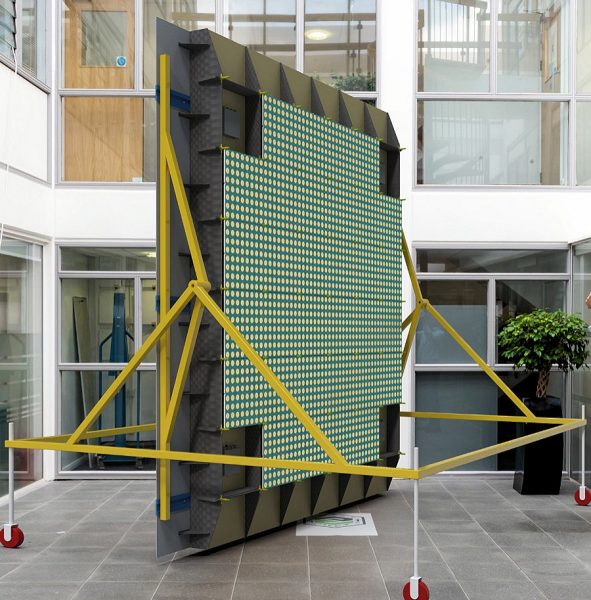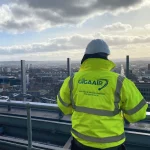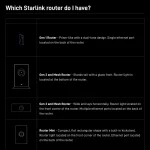5G Mobile from Drones – Cambridge Consultants Hail New Antenna

Technology firm Cambridge Consultants (CC) and Stratospheric Platforms Limited (SPL) have collaborated to build a new kind of wireless antenna, which could be installed on aircraft (e.g. drones) operating at an altitude of 20,000 metres and used to distribute 5G mobile broadband services over areas up to 140km in diameter.
Weighing in at “just” 120kg and measuring 3 metres square, the full-scale antenna may seem big and indeed it’s being hailed as the “world’s largest commercial airborne communications antenna.” But it’s also just the right size to fit on a number of existing High-Altitude Platforms (HAP), which would operate in the stratosphere and stay aloft for over a week at a time.
According to CC, a fleet of around 60 HAPs could blanket the whole of the United Kingdom with connectivity, providing even geographic coverage of peak 5G speeds in excess of 100Gbps in aggregate (shared capacity between many users) and at a lower cost than the equivalent need for hundreds of today’s terrestrial masts.
Advertisement
The companies claim that their system, which has so far taken 4 years to develop, holds the potential to “connect the unconnected in the developing world, to fill gaps in coverage across the developed world and to ensure rural areas aren’t left behind anywhere across the globe.”
SPL recently completed the first successful test trial of the new system in September 2020 with Deutsche Telekom. The demonstration was performed in Bavaria using a H3Grob 520 aircraft – a remotely piloted Aircraft System (RPAS) operating in the low stratosphere at an altitude of 45,000ft (c. 14km) – and an LTE (4G) antenna, with architecture compatible with 5G standalone delivered signals, to user equipment at the 2.1GHz frequency band.
As part of that test a Voice-over-LTE (VoLTE) call, video call, data call, and video streaming were demonstrated on a standard smartphone and linked into the DT terrestrial live network. The stratospheric test demonstrated download speeds of 70Mbps and upload speeds of 23Mbps over 10MHz of spectrum bandwidth. The final commercial kit will be significantly more capable.
Tim Fowler, Chief Sales Officer at Cambridge Consultants, said:
“Four years ago SPL approached Cambridge Consultants with an ambitious vision: to revolutionize the telecoms experience by beaming connectivity from the sky. Our role, to design and build this ‘mega cell tower in the stratosphere’, has seen us make breakthrough after breakthrough and we’re excited to build on these innovations with SPL, on the path to commercial deployment.”
The first commercial service isn’t anticipated to begin (in Germany) until 2024 as there’s still a lot of development to be done.
Advertisement
Mark is a professional technology writer, IT consultant and computer engineer from Dorset (England), he also founded ISPreview in 1999 and enjoys analysing the latest telecoms and broadband developments. Find me on X (Twitter), Mastodon, Facebook, BlueSky, Threads.net and Linkedin.
« New UK ISP Swish Fibre Speed Tests Network to Nearly 8Gbps
Cumbria Hamlets Dig 1.5 Miles for Openreach’s FTTP Broadband »






















































I wonder how long it takes before the ongoing costs of flying these things out weigh the cost of installing more traditional infrastructure?
Then when they start falling out the sky and crashing into homes or causing issues with other aircraft that will be the end of it!
Cool technology, but I wonder if standard 5G towers backed by solar and something like Starlink for backhaul might be a more sustainable strategy.
Could be great for disaster recovery though.
If you have good coverage on ground based communications , you wont really need HAPs to cover a disaster, well certainly not one on the mainland.
So these haps systems are going to utilise the portions of spectrum in use in ground based antenna sites and then relay all that data back over what ? The same spectrum or over a wireless backhaul to ground sites that would all need building. hmm
Just because you can doesn’t mean you should.